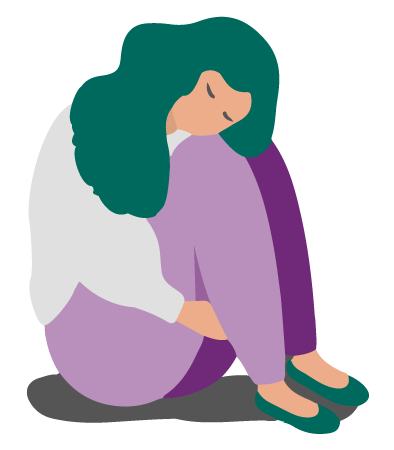Creating Safe Schools for LGBTQ+ Youth
Core Competencies for Professional Development
This brief provides key learning objectives that schools and school districts can incorporate in their PD offerings to help teachers and other school staff build core competencies for supporting LGBTQ+ youth in schools.
Lesbian, gay, bisexual, transgender, and queer/questioning (LGBTQ+) youth are more likely than non-LGBTQ+ youth to experience violence at school and have lower levels of school connectedness.
Professional development (PD) for teachers and other school staff on how to support LGBTQ+ youth is a best practice for improving safety and connectedness in schools for both LGBTQ+ youth and their cisgender, heterosexual peers.

Learning Objectives
Learning Objective 1: Describe the Basics
Understanding how sexual orientation and gender identity are defined and how the two differ is the first step in building a safe and supportive environment for LGBTQ+ youth. By knowing and applying these concepts, teachers and other school staff can help LGBTQ+ youth feel more welcomed at school.
Sexual Orientation
Sexual Orientation
- Define sexual orientation
- Describe the diversity of sexual orientation among adolescents and young adults
- Describe how sexual orientation is formed and evolves during adolescence
- Define sexual orientation
- Describe the diversity of sexual orientation among adolescents and young adults
- Describe how sexual orientation is formed and evolves during adolescence
Gender Identity
Gender Identity
- Define gender identity
- Describe the diversity of gender identity among adolescents and young adults
- Describe how gender identity is formed and evolves during adolescence
- Define gender identity
- Describe the diversity of gender identity among adolescents and young adults
- Describe how gender identity is formed and evolves during adolescence
Inclusive Language
Inclusive Language
- Describe the differences between sexual orientation and gender identity
- Identify appropriate language, including affirming pronouns, when talking to or about LGBTQ+ youth
- Describe the differences between sexual orientation and gender identity
- Identify appropriate language, including affirming pronouns, when talking to or about LGBTQ+ youth
Learning Objective 2: Identify Health Disparities & Their Root Causes
LGBTQ+ youth experience stigma and discrimination that put them at increased risk for negative health outcomes, such as poor mental health and high-risk substance use. Understanding what places LGBTQ+ youth at higher risk for negative health outcomes can provide teachers and other school staff with an important foundation for working to mitigate these health disparities.
Discrimination & Stress
Discrimination & Stress
- Describe how stigma, discrimination, harassment, and microaggressions affect LGBTQ+ youth
- Describe how these negative experiences influence the psychological and physical stress levels of LGBTQ+ youth
- Describe how stigma, discrimination, harassment, and microaggressions affect LGBTQ+ youth
- Describe how these negative experiences influence the psychological and physical stress levels of LGBTQ+ youth
Health Risks & Disparities
Health Risks & Disparities
- Define sexual health, mental health, substance use, and violence
- Describe how LGBTQ+ youth disproportionately experience negative outcomes
- Identify the role of discrimination and stress in shaping negative health outcomes for LGBTQ+ youth
- Define sexual health, mental health, substance use, and violence
- Describe how LGBTQ+ youth disproportionately experience negative outcomes
- Identify the role of discrimination and stress in shaping negative health outcomes for LGBTQ+ youth
Learning Objective 3: Recognize the Influence of School Environments
Being in a healthy, supportive school environment can help LGBTQ+ students thrive and help lessen some of the health disparities they face. Teachers and other school staff can build knowledge and awareness around what factors within schools have the potential to cause harm and what factors could help prevent some of these health risks.
Risk Factors
in Schools
Risk Factors
in Schools
- Define risk factors
- Identify risk factors which primarily occur in school environments
- Describe how school-based risk factors impact LGBTQ+ youth
- Define risk factors
- Identify risk factors which primarily occur in school environments
- Describe how school-based risk factors impact LGBTQ+ youth
Protective Factors
in Schools
Protective Factors
in Schools
- Define protective factors
- Identify protective factors which primarily occur in school environments
- Describe how school-based protective factors impact LGBTQ+ youth
- Define protective factors
- Identify protective factors which primarily occur in school environments
- Describe how school-based protective factors impact LGBTQ+ youth
Learning Objective 4: Implement Supportive Policies & Practices
Teachers and school staff can promote positive changes within school environments that address health disparities and help LGBTQ+ youth thrive in schools. These policies and practices can be implemented by individual teachers within classrooms, or throughout the broader school community.
Curricula
Curricula
School Policies
School Policies
- Identify examples of LGBTQ+-inclusive school policies
- Describe how school staff can enact change within their school communities
- Identify examples of LGBTQ+-inclusive school policies
- Describe how school staff can enact change within their school communities
Success Story

From 2015 to 2017, the American Psychological Association (APA) partnered with education agencies to implement an in-person professional development workshop, developed with CDC support, on supporting LGBTQ+ students—RESPECT Workshop.
State education agencies in Illinois, Mississippi, New Mexico, and Vermont participated in data collection before and after the workshops. After completing the workshop, 100% of survey respondents reported promoting school policies, programs, and practices for a safe and supportive school environment.
These respondents reported significant increases in knowledge, skills, and confidence in their abilities to promote safe school environments; motivate students to prevent HIV, STDs, and pregnancy; and assist LGBTQ+ students in coping with specific challenges.
Resources
- Advocates for Youth: Creating Safer Spaces for LGBTQ Youth. A Toolkit for Education, Healthcare, and Community-Based Organizations.
- American Psychological Association: RESPECT Workshop. Workshop for in-school support professionals.
- CDC Division of Adolescent and School Health: LGBTQ Inclusivity in Schools: A Self Assessment Tool. Resource for school staff to assess their individual inclusivity practices.
- GLSEN: Professional Development. Toolkits, webinars, and workshops for educators.
- GLSEN: Safe Spaces Kit. Implementation resource on establishing safe spaces.
- GLSEN: Changing the Game: For Adults. Implementation resource on making sports more inclusive for students.
- Human Rights Campaign: Welcoming Schools. A bias-based bullying prevention program providing LGBTQ+ and gender inclusive professional development training, lesson plans, booklists and resources specifically designed for educators and youth-serving professionals.
- Los Angeles LGBT Center: Out for Safe School Campaign. PD program to facilitate safe spaces for LGBTQ+ youth.
- National Center for Lesbian Rights, Gender Spectrum, Human Rights Campaign, ACLU: Schools in Transition: A Guide for Supporting Transgender Students in K-12 Schools. A resource guide for supporting transgender students in schools.